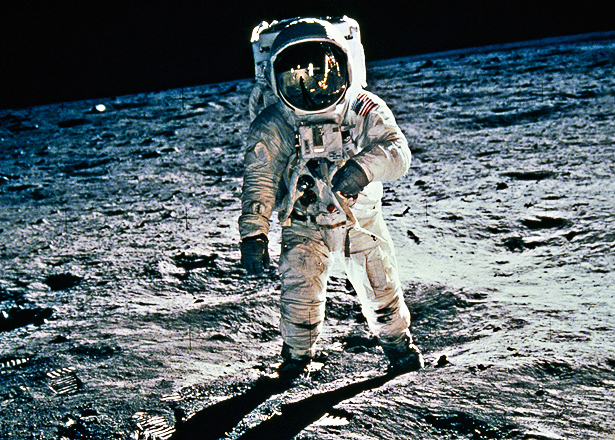
Armstrong walks on moon on July 20, 1969
Armstrong walks on moon: At 10:56 p.m. EDT, American astronaut Neil Armstrong, 240,000 miles from Earth, speaks these words to more than a billion people listening at home: “That’s one small step for man, one giant leap for mankind.” Stepping off the lunar landing module Eagle, Armstrong became the first human to walk on the surface of the moon.
The American effort to send astronauts to the moon has its origins in a famous appeal President John F. Kennedy made to a special joint session of Congress on May 25, 1961: “I believe this nation should commit itself to achieving the goal, before this decade is out, of landing a man on the moon and returning him safely to Earth.” At the time, the United States was still trailing the Soviet Union in space developments, and Cold War-era America welcomed Kennedy’s bold proposal.
In 1966, after five years of work by an international team of scientists and engineers, the National Aeronautics and Space Administration (NASA) conducted the first unmanned Apollo mission, testing the structural integrity of the proposed launch vehicle and spacecraft combination. Then, on January 27, 1967, tragedy struck at Kennedy Space Center in Cape Canaveral, Florida, when a fire broke out during a manned launch-pad test of the Apollo spacecraft and Saturn rocket. Three astronauts were killed in the fire.
Despite the setback, NASA and its thousands of employees forged ahead, and in October 1968, Apollo 7, the first manned Apollo mission, orbited Earth and successfully tested many of the sophisticated systems needed to conduct a moon journey and landing. In December of the same year, Apollo 8 took three astronauts to the dark side of the moon and back, and in March 1969 Apollo 9 tested the lunar module for the first time while in Earth orbit. Then in May, the three astronauts of Apollo 10 took the first complete Apollo spacecraft around the moon in a dry run for the scheduled July landing mission.
At 9:32 a.m. on July 16, with the world watching, Apollo 11 took off from Kennedy Space Center with astronauts Neil Armstrong, Edwin Aldrin Jr., and Michael Collins aboard. Armstrong, a 38-year-old civilian research pilot, was the commander of the mission. After traveling 240,000 miles in 76 hours, Apollo 11 entered into a lunar orbit on July 19. The next day, at 1:46 p.m., the lunar module Eagle, manned by Armstrong and Aldrin, separated from the command module, where Collins remained. Two hours later, the Eagle began its descent to the lunar surface, and at 4:18 p.m. the craft touched down on the southwestern edge of the Sea of Tranquility. Armstrong immediately radioed to Mission Control in Houston, Texas, a famous message: “The Eagle has landed.”
At 10:39 p.m., five hours ahead of the original schedule, Armstrong opened the hatch of the lunar module. As he made his way down the lunar module’s ladder, a television camera attached to the craft recorded his progress and beamed the signal back to Earth, where hundreds of millions watched in great anticipation. At 10:56 p.m., Armstrong spoke his famous quote, which he later contended was slightly garbled by his microphone and meant to be “that’s one small step for a man, one giant leap for mankind.” He then planted his left foot on the gray, powdery surface, took a cautious step forward, and humanity had walked on the moon.
“Buzz” Aldrin joined him on the moon’s surface at 11:11 p.m., and together they took photographs of the terrain, planted a U.S. flag, ran a few simple scientific tests, and spoke with President Richard M. Nixon via Houston. By 1:11 a.m. on July 21, both astronauts were back in the lunar module and the hatch was closed. The two men slept that night on the surface of the moon, and at 1:54 p.m. the Eagle began its ascent back to the command module. Among the items left on the surface of the moon was a plaque that read: “Here men from the planet Earth first set foot on the moon–July 1969 A.D–We came in peace for all mankind.”
At 5:35 p.m., Armstrong and Aldrin successfully docked and rejoined Collins, and at 12:56 a.m. on July 22 Apollo 11 began its journey home, safely splashing down in the Pacific Ocean at 12:51 p.m. on July 24.
There would be five more successful lunar landing missions, and one unplanned lunar swing-by, Apollo 13. The last men to walk on the moon, astronauts Eugene Cernan and Harrison Schmitt of the Apollo 17 mission, left the lunar surface on December 14, 1972. The Apollo program was a costly and labor intensive endeavor, involving an estimated 400,000 engineers, technicians, and scientists, and costing $24 billion (close to $100 billion in today’s dollars). The expense was justified by Kennedy’s 1961 mandate to beat the Soviets to the moon, and after the feat was accomplished ongoing missions lost their viability.
History Channel / Wikipedia / Encyclopedia Britannica / NASA /
Smithsonian National Air and Space.edu / Linar and Planetary Institute.edu / Space.com /
Apollo 11 (YouTube search) 

AK-47 goes into production in the Soviet Union on July 06, 1947
AK-47 goes into production in the Soviet Union: This day in history, one of the most famous assault rifles, goes into production in the Soviet Union: AK-47. Today, the weapon is part of the armament of many infantry armies, drug traffickers and terrorists.
The “Avtomat Kalashnikova” is Mikhail Kalashnikov’s invention. It is said that he was inspired to build a weapon during WWII after he was badly injured and he couldn’t serve his country anymore. Therefore he tried to help his country by listening to the soldiers. He found out that many of the wounded Soviet soldiers were complaining about the poor quality of Soviet small weapons.
What made AK-47 so popular?
It is believed that the AK-47 gained its popularity thanks to the accuracy. In fact, the weapon is used close-range combat situations, rather than distant engagements. So, most likely, AK-47 is popular for other reasons.
The weapon was designed to be easy to use, to repair and reliable. Also it can be used in any conditions: sand, mud, dirt, etc. Therefore, the AK-47 selling arguments are the simplicity and its ability to “adapt” in any condition. Its firing mechanism is so simple that the gun jams very rarely. In conclusion, the gun has a lifespan between 20 and 40 years.
A deadly inspiration?
AK-47: Avtomat Kalashnikov 1947. It is believed that the rifle is actually a combination of previous riffles. Mikhail Kalashnikov combined the features of the American M1 and the German StG44.
It is not very easy for a person to create a weapon that probably killed hundreds of thousands of people. However, Mikhail Kalashnikov said he was not troubled by the influence of his rifle. Even more, he declared that he sleeps very well and the persons to blame for using the weapon are the politicians, according to an interview from 2007. On the other hand, he also blamed the Nazis for making him to become a gun designer:
“Blame the Nazi Germans for making me become a gun designer. I always wanted to construct agricultural machinery.” (M. Kalashnikov)
Five Facts
• Mozambique is the only country that has the AK-47 on its flag.
• Mikhail Kalashnikov museum from Izhevsk, Russia, attracts more than 10,000 visitors per month.
• There are an estimated 100 million AK-47 spread across the globe, which made it into the Guinness Book of Records as the most widely spread weapon in the world.
• Acording to Oxford University, the average global price of AK-47 is estimated at $550. Though in the African countries the price is around $350.
• Mikhail Kalashnikov didn’t cash a cent for his invention. More exactly he didn’t patent the design. However he managed to license his name to two vodka makers.
History Key / Wikipedia / Encyclopedia Britannica / Popular Mechanics / Biography /
Mikhail Timofeyevich Kalashnikov (YouTube) 
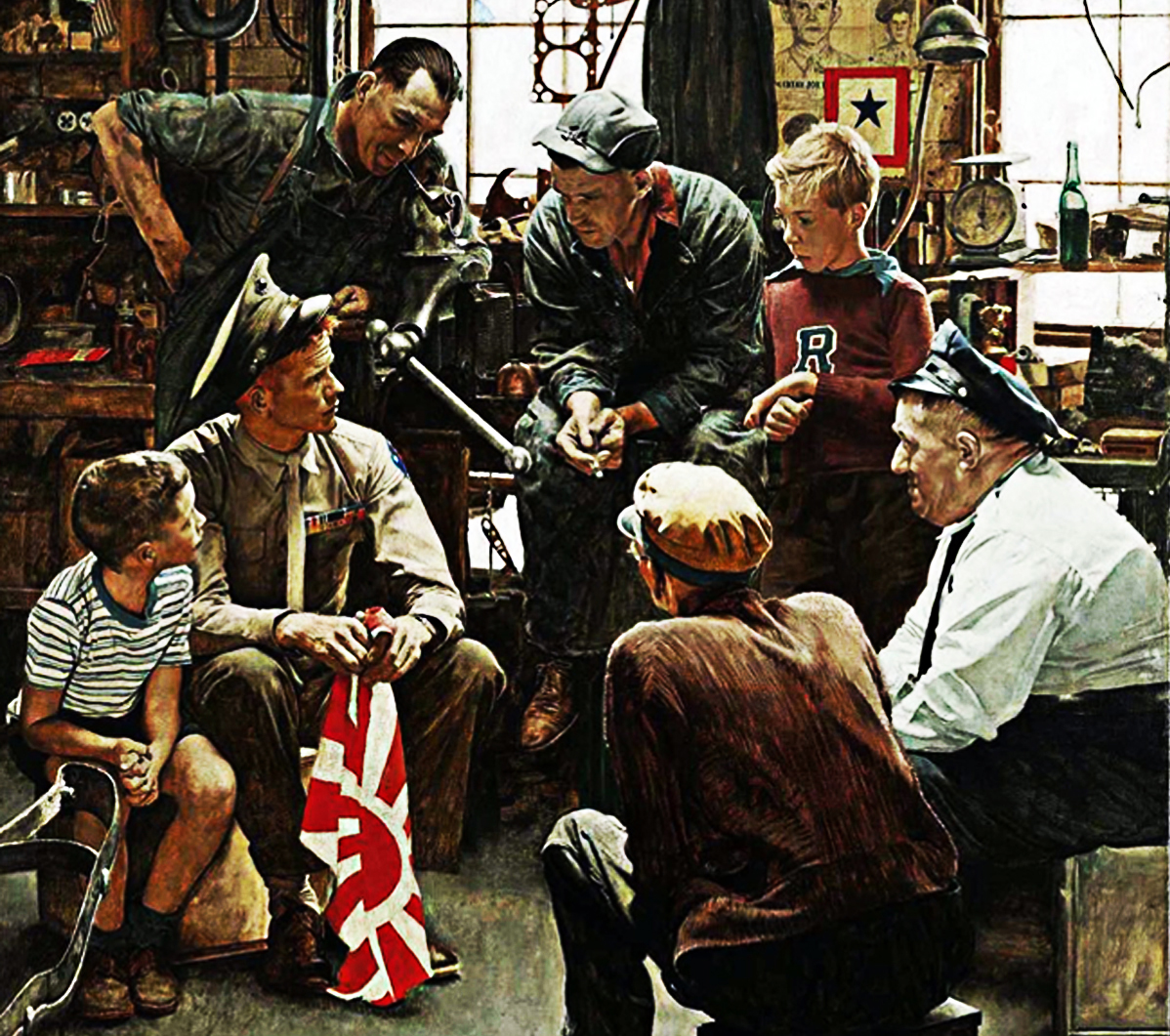
Understanding Military Terminology
Rehabilitative Care
(DOD) A security officer responsible to the chief of mission (ambassador), for security functions of all United States embassies and consulates in a given country or group of adjacent countries.
Also called RSO.
Joint Publications (JP 3-10) Joint Security Operations in Theater, 25 July 2019
Rehabilitative Care
(DOD) Therapy that provides evaluations and treatment programs using exercises, massage, or electrical therapeutic treatment to restore, reinforce, or enhance duty or discharge from the Service.
Also called Restorative Care.
See also Patient Movement Policy; Theater.
Joint Publications (JP 4-02) Joint Health Services - Intelligence Resource Program
Rehearsal Phase
(DOD) In amphibious operations, the period during which the prospective operation is practiced.
See also Amphibious Operation.
Joint Publications (JP 3-02) Joint Health Services - Intelligence Resource Program
Reinforcing Obstacles
(DOD) Those obstacles specifically constructed, emplaced, or detonated through military effort and designed to strengthen existing terrain to disrupt, fix, turn, or block enemy movement.
See also Obstacle.
Joint Publications (JP 3-15) Barriers, Obstacles, and Mine Warfare for Joint Operations
Reintegrate
(DOD) In personnel recovery, the task of providing medical care and psychological decompression to allow the conduct of appropriate debriefings to ultimately return recovered personnel back to duty and their family.
Joint Publications (JP 3-50) Personnel Recovery - Intelligence Resource Programs
Joint Publication - Department of Defense Dictionary of Military and Associated Terms
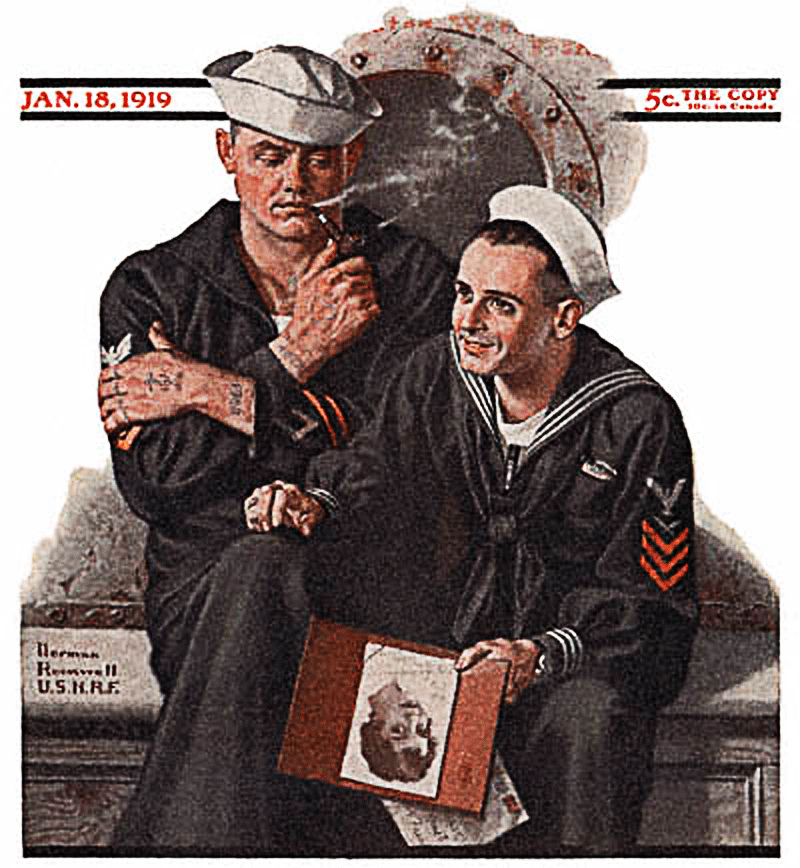
The Old Salt’s Corner
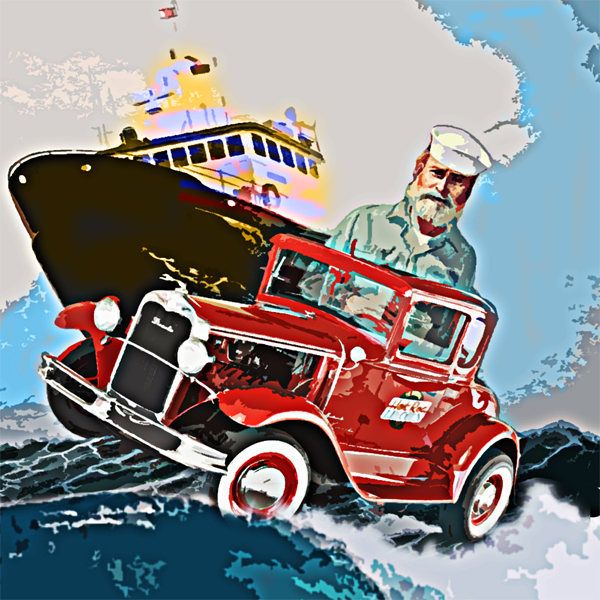
“Navy Version Of The Hot Rod Race Song”
Sang to music of Hot Rod Lincoln -
Well me and my buddy, ol' Swabby Joe,
took off in a can from ol' Sasebo.
The chow was poor 'n' the fuel was low,
but the doggone can could really go.
Along about in the middle of the night
we were steamin' along like a tin can might,
when a cruiser behind us blinked her lights,
blew her whistle and pulled to the right.
Well we had twin screws on our old can
which makes you think that we're in a jam.
but f'you swabs who don't get this kinda jive,
we had six boilers with overdrive.
Now we're tin can men, and we likely knew,
The stern was down from the turn of the screws,
but f'you swabs who don't get this kinda jive,
as on through the waves we flew and flew.
Our exec was pale, he said he was sick,
but us tin can men knew he was just a hick.
Why should we worry, what the heck,
double-spacingthat cruiser 'n' us were still neck-and-neck.
Yes on through the ocean we did glide,
a'flyin' low with the throttle wide.
Our skipper screamed and the crew they cried,
but the doggone cruiser was still right beside.
Well we looked over the fantail, where sumpin' was a comin'
we thought it was a jet by the way it was a hummin'.
It was a'comin' along at a terrible pace,
and we knew right then was the end of this race.
As it steamed passed us we looked the other way,
and the cruiser's crew, they had nothin' to say.
For there goin' by was a reserve JG, pushin' a hopped-up LST.

“I’m Just Sayin”
“Truth will ultimately prevail where there is pains to bring it to light.”
“Guard against the impostures of pretended patriotism.”
“Few men have virtue to withstand the highest bidder.”
“It is better to offer no excuse than a bad one.”
“Worry is the interest paid by those who borrow trouble.”
“Laws made by common consent must not be trampled on by individuals.”
“It is impossible to reason without arriving at a Supreme Being.”
“The foolish and wicked practice of profane cursing and swearing is a vice so mean and low that every person of sense and character detests and despises it.”
“It is far better to be alone,
than to be in bad company.”
“Let us raise a standard to which the wise and honest can repair;
the rest is in the hands of God.”
“If the freedom of speech is taken away,
then dumb and silent we may be led,
like sheep to the slaughter.”
“Mankind,
when left to themselves,
are unfit for their own government.”
~ George Washington

“Thought for the Day”
“Guests, like fish, begin to smell after three days.”
“An investment in knowledge pays the best interest.”
“Early to bed and early to rise makes a man healthy, wealthy and wise.”
“A place for everything, everything in its place.”
“If passion drives you, let reason hold the reins.”
“He that is good for making excuses is seldom good for anything else.”
“Any fool can criticize, condemn and complain - and most fools do.”
“He who falls in love with himself will have no rivals.”
“In this world nothing can be said to be certain,
except death and taxes.”
“Without freedom of thought,
there can be no such thing as wisdom -
and no such thing as public liberty without freedom of speech.”
“We must, indeed,
“all hang together or, most assuredly,
we shall all hang separately.”
“Be at war with your vices,
at peace with your neighbors,
and let every new year find you a better man.”
“Tell me and I forget.
Teach me and I remember.
Involve me and I learn.”
~ Benjamin Franklin

“What I Learned”
“Always take hold of things by the smooth handle.”
“I like the dreams of the future better than the history of the past.”
“Whenever a man has cast a longing eye on offices,
a rottenness begins in his conduct.”
“I like the dreams of the future better than the history of the past.
but is always the result of a good conscience, good health, occupation,
and freedom in all just pursuits.”
“Sometimes it is said that man cannot be trusted with the government of himself.
Can he, then be trusted with the government of others?
Or have we found angels in the form of kings to govern him?
Let history answer this question.”
~ Thomas Jefferson
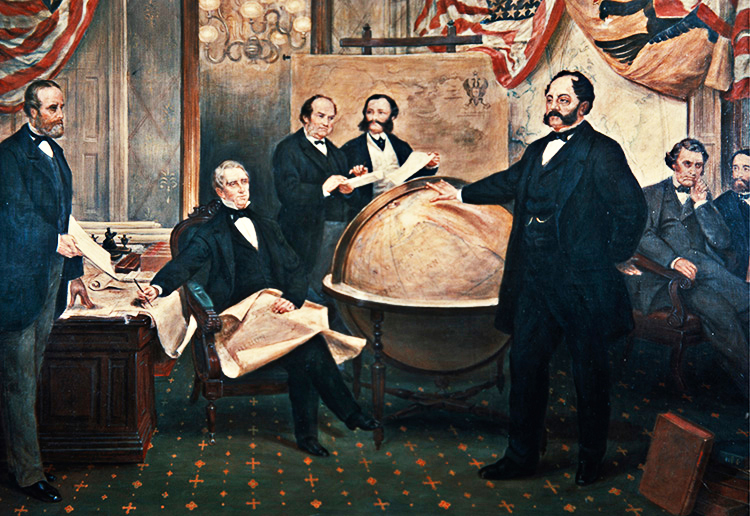
Mr. Answer Man Please Tell Us: Why Did Russia Sell Alaska to the United States of America?
Though Cold War rivalry endures as an image of Russo-American relations, the two great nations have a history of pragmatic deal-making, which reached its zenith with the sale of Russia’s Alaskan Peninsula to America. The deal was born not of the Russian Empire’s rivalry with the United States, but through both countries’ competition with Britain, whose Empire made it the most powerful nation of the age, one with a truly global presence.
Russia and Britain had already faced off in the Crimean War, which had begun in October 1853, and saw Anglo-French forces lined up against a Russian and Ottoman alliance. Though, as the name suggests, the conflict was concentrated on Russia’s south-west flank, it also spread to the Pacific, when a fleet of Russian cruisers based in Siberian ports threatened Britain’s trading links with California. A combined British and French squadron was assembled at Honolulu and on July 25th, 1854 it set sail in pursuit of the Russian ships. Having taken the weakly defended port of Sitka in Alaska, they then headed south for Petropavlovsk, which ended in catastrophe for the allies.
Even so, Russia remained fearful of British ambitions in the Pacific. Vancouver Island, just off the mainland of western Canada, was already a British Crown Colony and the population of neighbouring British Columbia was increasing rapidly, as gold prospectors rushed west. Plans were advanced to incorporate the territory formally into the Empire. This meant that Britain’s possessions in North America would now share a land border with Russia.
Alaska was difficult to defend, given the awesome supply lines, and so Tsar Alexander II decided to sell up. In 1859 he approached both Britain and the US as potential buyers. The former showed little interest, while the latter was too distracted by the impending Civil War to give it enough thought. When that war came to an end in 1865, interest was rekindled and the tsar instructed his ambassador to the U.S., Edward de Stoeckl, to begin formal negotiations with Secretary of State, William Seward. Not only did the potential deal offer a considerable expansion of U.S. territory - at more than 600,000 square miles it is twice the size of Texas - and a strategic location between Russia and British North America, but it was also a useful distraction from the fraught issue of post-Civil War Reconstruction.
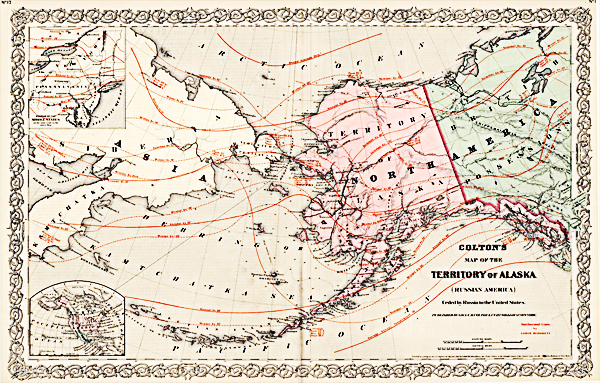
After an all-night negotiating session, the treaty was signed at 4am on March 30th, 1867. The agreed price was $7.2 million, equivalent to around $120 million today, which works out at about two cents an acre.
Captain Alexei Peschkurov handed over the territory to his opposite number with the words:
By authority from his Majesty, the Emperor of Russia, I transfer to the United States the territory of Alaska.
Just a few Russian fur traders and Orthodox priests remained behind and it was not until the Klondike gold rush of 1896 that Alaska attracted new settlers in numbers.
A myth arose that the purchase of Alaska was unpopular with the U.S. public and the deal was certainly criticised by some commentators as ‘Seward’s Folly’. Today, its reputation for eccentricity and rugged individualism endears and unnerves in equal measures.
Alaska became the 49th state of the U.S. on January 3rd, 1959. Despite its barely tapped mineral riches, it is claimed by some economists that Alaska’s tax revenues and resource royalties have never exceeded the cost to the federal government of governing a largely untamed territory of this size.
Encyclopedia Britannica
• Office of the Historian
• History Today
• Library of Congress
• Quora
• Smithsonian
• Wikipedia
Alaska Purchase (YouTube) 

NAVSPEAK aka U.S. Navy Slang
A.J. Squared Away: (Name For) A sailor who is always “squared away”, meaning always having a perfect shave, perfectly ironed uniform, spit-shined shoes, haircut with less than 1mm of hair, spotless uniform, etc.
Anyone who has been designated with this nickname is most likely a lifer who has no life outside the navy.
Compare to “dirtbag”.
The more derogatory “A.J. Squared the fuck Away” is often used by those that can't attain A.J.'s high standards.
All Ahead Bendix: Attempt more than full speed ahead, e.g. by bypassing limiters or subjecting the engine motors to overvoltage, on the assumption that the risk of defeat outweighs the risk of engine damage.
All-16ths: An adjustable wrench. While not permitted to do the job, it gets the job done just the same.
All Three Dead: A3D Skywarrior.
Alpha Dogs: Refers to Alpha Company, a division of vehicle operators and mechanics within the Naval Mobile Construction Battalions, also known as the Fighting Seabees.
Alpha Inspection: Formal inspection of uniforms and living spaces. Often performed with a white glove and a black sock.
Alpha Mike Foxtrot: Adios, MotherFuckers.
Wiktionary.org

Just for you MARINE
ALICE: All-purpose Lightweight Individual Carrying Equipment, a form of combat gear still in occasional use in some Marine activities, replaced by MOLLE and ILBE.
All Hands: Entire ship's company or unit personnel, including all officers and enlisted personnel; also, the official Navy magazine
Alphas or Class As: Service Alpha uniform from the phonetic letter A
Wikipedia.org
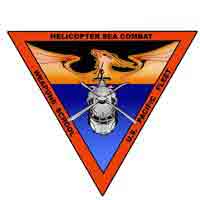
Naval Aviation Squadron Nicknames
Helicopter Sea Combat Weapons School Pacific Other Rotary Wing Aircraft Units - nicknamed the “N/A”
United States Navy - Naval Air Station North Island - Headquarters and home port of the U.S. Navy's Fleet Forces Command.
Wikipedia.org

Where Did That Saying Come From?

“A sight for sore eyes:” Meaning: A welcome sight; someone or something you are glad to see.
History: This phrase was first recorded by Jonathan Swift, in A complete collection of genteel and ingenious conversation, 1738:
“The Sight of you is good for sore Eyes.”
The title of the work suggests that it was in use prior to his writing it down. The currently used version of the phrase was first recorded by William Hazlitt, in New Monthly Magazine, 1826:
“Garrick's name was proposed on condition he should act in tragedy and comedy... What a sight for sore eyes that would be!”
That's all pretty straightforward. The rise of the World Wide Web has given this phrase a new lease of life. 'Sight', 'site' and 'cite' form one of the small number of three-word homophone groups, that is, words that sound the same but are spelled differently. Another three-word example is 'you', 'yew' and 'ewe'.
A quick scan of the Web courtesy of Google shows these hits:
“sight for sore eyes” - 549,000
“site for sore eyes” - 133,000
“cite for sore eyes” - 553
Phrases.org UK

Science & Technology

FEATURE: Eruption of Tonga underwater volcano found to disrupt satellite signals halfway around the world
• Earlier snowpack melt in the West could bring summer water scarcity
NASA picks Bezos' Blue Origin to build lunar landers for moonwalkers
• Demystifying vortex rings in nuclear fusion and supernovae
• Examining puppeteer fungus' targeted takeover of zombie flies
Scientists urge crackdown on methane emissions with only 13% regulated
• Topologically structured light detects the position of nano-objects with atomic resolution
• Self-healable and crack-resistant hydrogel microfibers inspired by spider silk
Dark cloud over ChatGPT revolution: the cost
• Phase I trial demonstrates first pharmacological treatment able to improve cardiac function in stiff-heart syndrome
• Machine-learning program reveals genes responsible for sex-specific differences in Alzheimer's disease progression
Phys.org / MedicalXpress / TechXplore

FEATURE: The laws of physics have not always been symmetric, which may explain why you exist
• Largest study of video games reveals male characters say twice as much as female characters
Element creation in the lab deepens understanding of surface explosions on neutron stars
• World's most sensitive model-independent experiment starts searching for dark matter
• Long-term study shows tree species diversity increases likelihood of planting success
DarkBERT learns language of the Dark Web
• A strategy to induce the formation of a stable salt-derived solid electrolyte interphase in lithium metal batteries
• Study reveals unique molecular machinery of woman who can't feel pain
Stroke drug offers neuroprotection without long term impact on memory and learning
• Immune system discovery could lead to better spinal injury treatments
• A novel high-throughput method for screening protein-secreting microbial strains
Phys.org / MedicalXpress / TechXplore

Bizarre News (we couldn’t make up stuff this good - real news story)
Strange Star System May Hold First Evidence Of An Ultra-Rare “Dark Matter Star”

In a distant star system, a sunlike star orbits an invisible object that may be the first example of a “boson star” made of dark matter, new research suggests
Astronomers long thought that a peculiar star system observed by the European Space Agency's Gaia satellite was a simple case of a star orbiting a black hole. But now, two astronomers are challenging that claim, finding that the evidence suggests something far stranger: possibly, a never-before-seen type of star made of invisible dark matter. Their research, which has yet to be peer-reviewed, was published April 18 on the preprint server arXiv.
The system itself consists of a sunlike star and, well, something else. The star weighs a little less than the sun (0.93 solar mass) and has roughly the same chemical abundance as our star. Its mysterious companion is much more massive - around 11 solar masses. The objects orbit each other at a distance of 1.4 astronomical units, about the distance at which Mars orbits the sun, making a complete orbit every 188 days.

What could that dark companion be? One possibility is that it's a black hole. While that would easily fit the bill in terms of the orbital observations, that hypothesis has challenges.
Black holes form from the deaths of very massive stars, and for this situation to arise, a sunlike star would have to form in companionship with one of those monsters. While not outright impossible, that scenario requires an extraordinary amount of fine-tuning to make the match happen and to keep these objects in orbit around each other for millions of years.
So perhaps that dark orbital companion is something much more exotic, as researchers propose in the new study. Maybe, they suggest, it's a clump of dark matter particles.
Dark matter is an invisible form of matter that makes up the vast majority of the mass of every single galaxy. We still do not have a solid understanding of its identity. Most theoretical models assume that dark matter is smoothly distributed in each galaxy, but there are models that allow it to clump up on itself.

One of these models hypothesizes that dark matter is a new kind of boson. Bosons are the particles that carry the forces of nature; for example, a photon is a boson that carries the electromagnetic force. While we know of only a limited set of bosons in the Standard Model of particle physics, there's nothing, in principle, stopping the universe from having many more kinds.
These kinds of bosons wouldn't carry forces, but they would still soak the universe. Most importantly, they would have the ability to form large clumps. Some of these clumps could be the size of entire star systems, but some could be much smaller. The smallest clumps of bosonic dark matter could be as small as stars, and these hypothetical objects get a new name: boson stars.
Boson stars would be entirely invisible. Because dark matter doesn't interact with other particles or with light, we could detect them only through the gravitational influence on their surroundings — like if a regular star were to orbit a boson star.
The researchers pointed out that a simple model of boson dark matter could produce enough boson stars to make this result in the Gaia data plausible, and that replacing a putative black hole with a boson star could explain all of the observational data.
While it's unlikely that this is actually the discovery of a boson star, the authors still urged follow-up observations. Most importantly, this unique system gives us a rare opportunity to study the behavior of strong gravity, allowing us to examine Einstein's theory of general relativity to see if it holds up.
Secondly, if it is a boson star, this system is the perfect experimental setup. We can play around with our models of boson stars and see how well they can explain the orbital dynamics of this system and use that information to glimpse into the dark corners of the universe.
Related: “Runaway black hole”, or sneaky galaxy in disguise? Experts are conflicted.
Scientists grow swirling “black hole rings” in the lab for the 1st time
Some black holes may actually be tangles in the fabric of space-time, new research suggests
“Brain-eating” amoebas are a new concern in northern U.S. states, health officials advise
Live Science (03/20/2023) 


SONG FACTS
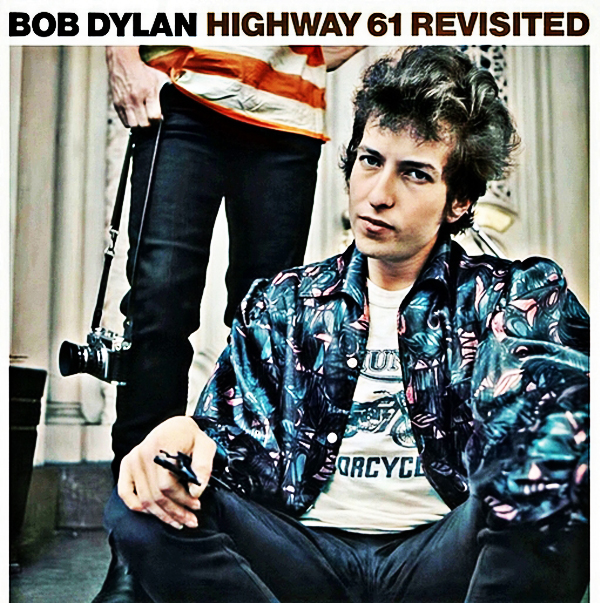
“Like A Rolling Stone”  - Bob Dylan
- Bob Dylan
Album: Rumours
Released 1965 
An iconic Bob Dylan song,
“Like A Rolling Stone”  is the story of a debutante who becomes a loner when she falls out of high society.
It's a crushing blow, but there is an upside: when you got nothing, you got nothing to lose. Another advantage to being on your own: when you're invisible, you have no secrets to reveal.
is the story of a debutante who becomes a loner when she falls out of high society.
It's a crushing blow, but there is an upside: when you got nothing, you got nothing to lose. Another advantage to being on your own: when you're invisible, you have no secrets to reveal.
The title is not a reference to The Rolling Stones. It is taken from the proverb “a rolling stone gathers no moss”. Dylan got the idea from the 1949 Hank Williams song
“Lost Highway”  ,
which contains the line, “I'm a rolling stone, all alone and lost.”
,
which contains the line, “I'm a rolling stone, all alone and lost.”
Thanks to The Rolling Stones, many associate the phrase with a life of glamor, always on the move, but Williams' song is about a hobo paying the price for his life of sin. Dylan also used the phrase to indicate loneliness and despair: his rolling stone is “without a home, like a complete unknown”.
“Like A Rolling Stone”  is Dylan's most popular song and his first big hit, although having a hit song was low on his list of priorities.
is Dylan's most popular song and his first big hit, although having a hit song was low on his list of priorities.
It was the only single from his sixth album, Highway 61 Revisited, released in 1965 when he was buzzworthy - especially in the New York City music scene - but hardly a sensation.
The song got significant airplay and many connected with it, sending them on an enlightening journey through his back catalog.
Dylan became one of the most respected and analyzed songwriters of his time, with “Like A Rolling Stone” often the gateway.
Al Kooper, who was primarily a guitarist and went on to be a very successful music producer, played the famous Hammond organ riff on this song. If you listen very closely at the beginning, you'll notice the organ is 1/8th note behind everyone else. Kooper wasn't an expert on the organ, but Dylan loved what he played and made sure it was turned up in the mix.
When Songfacts asked Kooper what stands out as his finest musical accomplishment, he said:
“By the amount of emails I receive and the press that I get it is undoubtedly the organ part on ‘Like A Rolling Stone’. I kinda like the way Martin Scorsese edited my telling of that story in the documentary No Direction Home. For me, no one moment or event sticks out. I think reading my resumé every 10 years or so, is my finest moment - certainly my most incredulous. I cannot believe I did all the stuff I did in one lifetime. One is forced to believe in luck and God.”
The song runs 6:13, which was far longer than the typical pop song. Some radio stations wouldn't play songs that ran much more than three minutes, so it was a big breakthrough when
“Like A Rolling Stone”  got significant airplay. It was also rare for a song packed with so many lyrics to do well commercially.
got significant airplay. It was also rare for a song packed with so many lyrics to do well commercially.
Dylan's manager, Albert Grossman, who revolutionized the music manager profession and was known as a shrewd defender of his artists, was the one who told Columbia Records that they couldn't shorten the song to make it more radio friendly.
It took a few more years for another song this long to break through as a hit:
“Hey Jude”  by The Beatles in 1968.
by The Beatles in 1968.
Dylan based the lyrics on a short story he had written. What made it into the song is only a small part of what was in the story.
We have Dylan's producer, Tom Wilson, to thank for the organ on this song - he's the one who invited Al Kooper to the session.
Wilson, who had been a jazz producer, started working with Dylan on his second album, The Freewheelin' Bob Dylan, released in 1963. He helmed Dylan's next three albums, but on Highway 61 Revisited only worked on “Like A Rolling Stone”, the last song he produced for Dylan.
Bob Johnston took over as Dylan's producer and was behind the board for all the other tracks on the album.
It is rumored that this was written about one-time debutante Edie Sedgwick, who was part of artist Andy Warhol's crowd. She was the subject of an emotional tug-of-war between the Dylan camp and the Warhol camp.
According to this theory, the song includes some fanged, accusatory lines about Warhol and the way he mistreated the girl:
“Ain't it hard when you discover that
He really wasn't where it's at
After he took from you everything he could steal”
“Poor Little Rich Girl” Sedgwick is viewed by many as the tragic victim of a long succession of abusive figures. After escaping home and heading to New York, she ran into Warhol, who soon began to use her as his starlet. When her 15 minutes had come to an end, Warhol moved on.
Sedgwick and Dylan had a brief affair shortly before the musician married Sarah Lownds, and many say that this Dylan song was written about her. It should be noted that there is absolutely nothing beyond circumstantial evidence to support this idea, but the myth is so widely known that it's taken on a life of its own and is therefore recognizable on its own terms.
“Like A Rolling Stone”  made it to #2 in the U.S., held off the top spot by The Beatles'
“Help!”
made it to #2 in the U.S., held off the top spot by The Beatles'
“Help!”  Dylan had another #2 hit with
“Rainy Day Women #12 And #35”
Dylan had another #2 hit with
“Rainy Day Women #12 And #35”  ,
but never reached #1 as an artist. He did as a writer when The Byrds hit #1 with their cover of
“Mr. Tambourine Man”
,
but never reached #1 as an artist. He did as a writer when The Byrds hit #1 with their cover of
“Mr. Tambourine Man”  in 1965.
in 1965.
This song made Bob Dylan an unlikely inspiration for Jimi Hendrix version of
“Like A Rolling Stone”  ,
who before hearing it considered himself a guitarist but not a singer.
Dylan proved you didn'ta conventional voice to sing rock and roll.
,
who before hearing it considered himself a guitarist but not a singer.
Dylan proved you didn'ta conventional voice to sing rock and roll.
Hendrix often played
“Like A Rolling Stone”  ,
including a performance at the 1967 Monterey Pop Festival.
Hendrix and Dylan met only once, but Jimi had a knack for bringing out the emotions in Dylan's songs: he also did a very successful cover of
“All Along The Watchtower”
,
including a performance at the 1967 Monterey Pop Festival.
Hendrix and Dylan met only once, but Jimi had a knack for bringing out the emotions in Dylan's songs: he also did a very successful cover of
“All Along The Watchtower”  .
.
Dylan recorded another version in 1970 for his Self Portrait album.
This time, he used experienced session players in Nashville, Tennessee. Ron Cornelius played guitar on the album and told Songfacts about the session:
“You're not reading manuscripts. In Nashville the players are booked because of what they can create right now, not what's written on a piece of paper.
Everybody's creating their part as the tape is rolling. Out of everybody I've worked with, I don't know of anyone who's been any nicer than Bob Dylan. He treated me wonderfully, but at the same time you knew being around him day after day that this man wakes up in a different world every morning. On a creative level that's a really good thing and to try to second guess him or to ask him what he actually meant by these lyrics, you're shooting in the dark because he's not going to tell you anyway.
And he might be telling you the truth when he says ‘I don't know, what does it mean to you?’”
The Rolling Stones didn't take their name from this song, but rather the 1950 Muddy Waters track
“Rollin' Stone”  .
The magazine Rolling Stone was named after this song, with a degree of separation:
.
The magazine Rolling Stone was named after this song, with a degree of separation:
Ralph Gleason wrote a piece for The American Scholar about the influence of music on young people called “Like a Rolling Stone”, which he titled after the song. When he founded the magazine with Jann Wenner in 1967, they decided to name it after his story. Wenner muddied the waters a bit when he wrote in the debut issue:
“Muddy Waters used the name for a song he wrote. The Rolling Stones took their name from Muddy's song. “Like a Rolling Stone’ was the title of Bob Dylan's first rock and roll record.”
Dylan's original draft of the song's lyrics were written on four sheets of headed note paper from the Roger Smith Hotel in Washington, DC.
The quartet of handwritten pages fetched over $2 million at Sothebys New York in June 2014, setting a new price record for a popular music manuscript.
he previous record was John Lennon's handwritten lyrics for the 1967 Beatles track
“A Day In The Life”  ,
which cost $1.2 million.
,
which cost $1.2 million.
An early manuscript of this song in the Dylan archives at the Center for American Research in Tulsa reveals some lyrics that were later changed or removed. Instead of “You used to laugh about”, it was ”You used to make fun about.” Some lines that were excised:
“You've studied all these great theories on life”
“And now you find out they don't mean a thing”
“You've been blessed by counts these old friends claimed to love”
“Now they're all ashamed of you.”
Continued ...
MORE SONGS

1963
“Blowin’ In The Wind”  Live
Live  Video
Video 
“Don’t Think Twice, It’s All Right”  Live
Live  Video
Video 
“A Hard Rain’s A Gonna Fall”  Live
Live  Video
Video 
1964
“It Ain’t Me Babe”  Live
Live  Video
Video 
“The Times They Are A-Changin’”  Live
Live 
1965
“Like A Rolling Stone”  Live
Live  Promo
Promo 
“It’s Alright, Ma (I’m Only Bleeding)”  Live
Live  Video
Video 
“Desolation Row”  Live
Live 
“Mr. Tambourine Man”  Live
Live  Video
Video 
“Like A Rolling Stone” - Bob Dylan 1965 Continued ...
Bob Dylan official site (Bob Dylan Discography) / Rock & Roll Hall of Fame / Billboard / All Music / Song Facts /
Ultimate Classic Rock / Bob Dylan
Image: “Highway 61 Revisited (album)” by Bob Dylan

Trivia
● Who met Cyclops on his third voyage?
Answer to Trivia
READ MORE: IMDB
● What planet is the coldest in our solar system?
Answer to Trivia
READ MORE: National Weather Service.gov
● What is a “foss” in Iceland?
Answer to Trivia
READ MORE: Guide to Iceland
● Who is credited with the legend of the Lost City of Atlantis?
Answer to Trivia
READ MORE: History.com

A Test for People Who Know Everything
From the Jeopardy Archives Category - “DISCOVERY” (Alex: We'll give you the ship; you give us the literary work it appears in.) ($200)
“In 1985 this ship was discovered by a U.S. Navy expedition led by Robert Ballard that found where she had lain for 73 years.”
Answer to Jeopardy READ MORE: Woods Hole Oceanographic.edu
From the Jeopardy Archives Category - “DISCOVERY” ($400)
“Collective name for the ancient manuscript fragments discovered in 1947 in caves in the Qumran region of the West Bank.”
Answer to Jeopardy READ MORE: Michigan State University, Abrams Planetarium.edu
From the Jeopardy Archives Category - “DISCOVERY” ($600)
“In this year James Marshall discovered gold from the American River in California; the next year the rush was on.”
Answer to Jeopardy READ MORE: History.com
From the Jeopardy Archives Category - “DISCOVERY” ($800)
“In late 1805 this pair's Corps of Discovery arrived at the Pacific Ocean near what is now Astoria, Oregon.”
Answer to Jeopardy READ MORE: Oregon Encyclopedia.org
From the Jeopardy Archives Category - “DISCOVERY” ($1,000)
“At Mount Wilson Observatory in the 1920s, Edwin Hubble made the discovery that this isn't a nebula but a large galaxy all its own.”
Answer to Jeopardy READ MORE: NASA

Joke of the Day

A Priest, A Doctor, and An Engineer
A priest, a doctor, and an engineer were waiting one morning for a particularly slow group of golfers.
The engineer fumed, “What's with those guys? We must have been waiting for fifteen minutes!”
The doctor chimed in, “I don't know, but I've never seen such inept golf!”
The priest said, “Here comes the greens-keeper. Let's have a word with him.”
He said, “Hello George, What's wrong with that group ahead of us?
They're rather slow, aren't they?”
The greens-keeper replied, “Oh, yes. That's a group of blind firemen.
They lost their sight saving our clubhouse from a fire last year, so we always let them play for free anytime!”
The group fell silent for a moment.
The priest said, “That's so sad.”
“I think I will say a special prayer for them tonight.”
The doctor said, “Good idea. I'm going to contact my ophthalmologist colleague and see if here's anything she can do for them.”
The engineer said, “Why can't they play at night?”






























